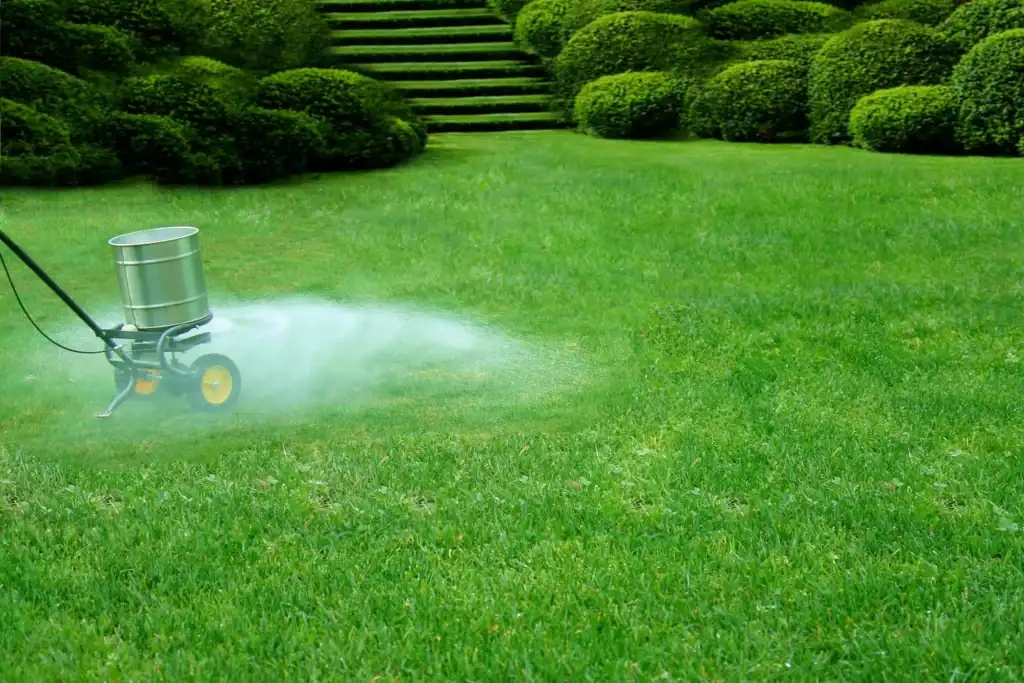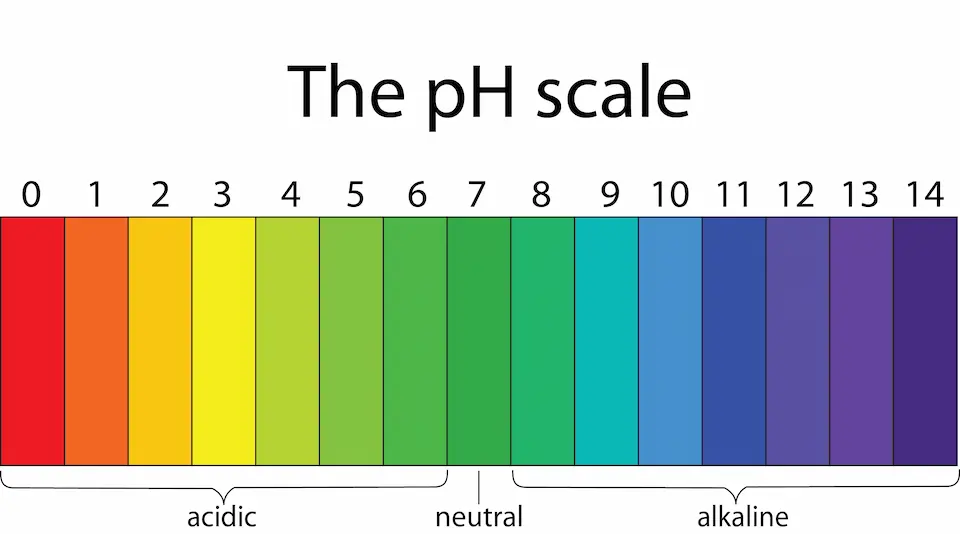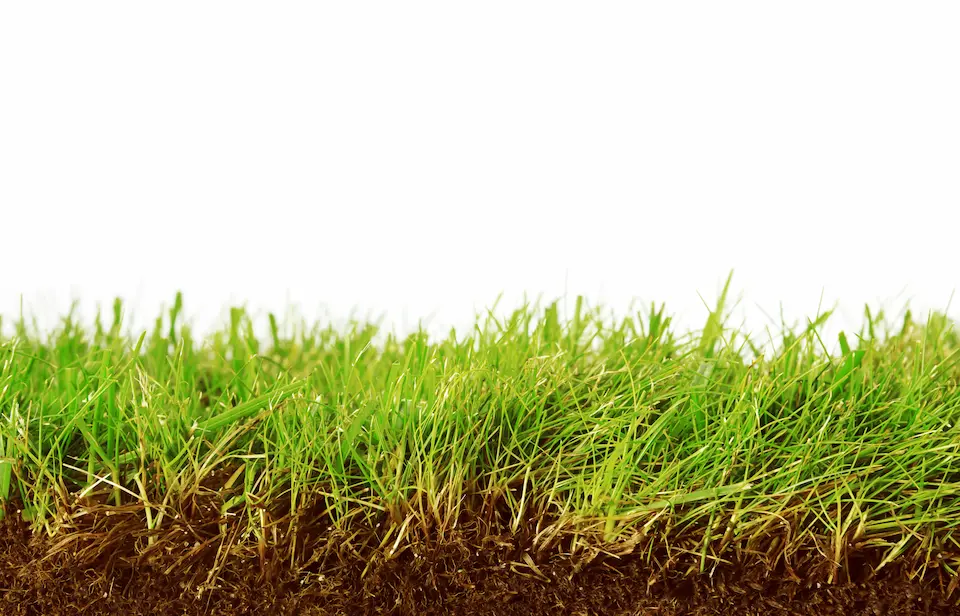Lime For Lawns: How Much And How Often You Should Apply Lime To Your Lawn

A lush and healthy lawn is something that many homeowners aspire to, but achieving it can be a challenge. One factor that plays a critical role in the health of your lawn is the soil pH. If the pH is too low, your lawn may struggle to absorb essential nutrients, leading to poor growth and yellowing grass.
Adding lime to your soil can help to raise the pH and promote healthy grass growth. However, applying lime to your lawn can be a bit tricky. That’s why our residential lawn care experts at Turf TitanZ are here to discuss how much and how often you should apply lime to your lawn to achieve optimal results.
How Lime Can Benefit Your Lawn
Lime is a soil amendment that can have numerous benefits for your lawn. It is primarily used to raise the soil pH, which can improve nutrient availability and promote healthy root growth. Additionally, lime can reduce soil toxicity by neutralizing excess acidity.
How Lime Affects Soil pH
Soil pH is a measure of the soil acidity or alkalinity of the soil. Most lawn grasses prefer a slightly acidic soil pH of around 6.0 to 7.0. If the pH is too low, your lawn may struggle to absorb essential nutrients like nitrogen, phosphorus, and potassium. Lime is an alkaline substance that can help to raise the soil’s pH and make it more alkaline, which can improve nutrient availability and promote healthy grass growth.
How Lime Can Improve Nutrient Availability
When the soil pH is too low, some essential nutrients like phosphorus, calcium, and magnesium can become less available to your lawn. Lime can help to increase the soil pH, making these nutrients more available for uptake by the roots of your grass. This can lead to stronger, healthier grass growth and a more vibrant lawn.
How Lime Can Reduce Soil Toxicity
In some cases, the soil can become too acidic due to factors like acid rain or overuse of fertilizers. This can lead to soil toxicity, which can harm your lawn and reduce its overall health. Lime can help to neutralize excess acidity in the soil, reducing soil toxicity and promoting healthier grass growth.
How Lime Can Promote Healthy Root Growth
When the soil pH is too low, the roots of your grass may struggle to absorb essential nutrients and water. By raising the soil pH with lime, you can create a more hospitable environment for your grass roots, allowing them to grow deeper and stronger.

Understanding Soil pH Levels
Soil pH is a measure of how acidic or alkaline soil is. It is important to understand what different pH levels mean for your plants and lawn before you lime your lawn.
pH Range: 0-3.5
- Very acidic soil that is not suitable for most plants or lawn grasses.
- Aluminum, manganese, and other toxic elements can be present at high levels.
pH Range: 3.5-4.5
- Highly acidic soil that is still not suitable for most plants or lawn grasses.
- Nitrogen, phosphorus, and other essential nutrients may be less available to plants.
pH Range: 4.5-5.5
- Moderately acidic soil that can be suitable for some plants, but may not be ideal for lawn grasses.
- Phosphorus and calcium may be less available to plants.
pH Range: 5.5-6.5
- Slightly acidic soil that is ideal for most lawn grasses and many plants.
- Nutrients like phosphorus, calcium, and magnesium are generally readily available to plants.
pH Range: 6.5-7.5
- Neutral soil that is suitable for most plants and lawn grasses.
- Nutrients like nitrogen, phosphorus, and potassium are generally readily available to plants.
pH Range: 7.5-8.5
- Moderately alkaline soil can be suitable for some plants, but may not be ideal for lawn grasses.
- Iron, manganese, and other micronutrients may be less available to plants.
pH Range: 8.5-9.5
- Highly alkaline soil that is not suitable for most plants or lawn grasses.
- Iron, zinc, and other micronutrients may be less available to plants.
pH Range: Above 9.5
- Very alkaline soil that is not suitable for any plants or lawn grasses.
- Phosphorus, iron, and other micronutrients may be less available to plants.
Different pH levels in soil can have a significant impact on plant growth and nutrient availability. Testing your soil regularly and making adjustments as needed can help ensure that your lawn and plants thrive. If you are unsure of how best to balance out the pH levels of your turf, contact a reputable lawn fertilization company to help.
Why pH Levels Matter for Your Lawn
Soil pH levels indicate the acidity or alkalinity of the soil, which can affect the availability of essential nutrients that your lawn needs to thrive.
Acidic Soil
When soil is too acidic, it can be challenging for your lawn to absorb essential nutrients like phosphorus, potassium, and calcium. The soil pH range for most lawn grasses is between 6.0 and 7.0. If the pH is lower than this range, it can lead to nutrient deficiencies and poor plant growth.
Basic Soil
When soil is too alkaline, it can cause nutrient imbalances and reduce the overall health of your lawn. In alkaline soil, iron, zinc, and other micronutrients may be less available to plants, leading to nutrient deficiencies.

How to Test Your Soil’s pH Level
Testing your soil’s pH level is an important step in maintaining a healthy lawn.
Here are some steps on how to test your lawn’s soil:
- Purchase a soil pH testing kit from a gardening or hardware store.
- Choose the area of your lawn where you want to test the soil pH.
- Collect soil samples from the chosen area using a garden trowel or shovel by digging down 4-6 inches and collecting a small amount of soil from several locations in the area.
- Remove any debris or rocks from the soil sample and break up any clumps.
- Follow the instructions on your chosen testing kit to test the soil pH level.
- Record the pH level for each area of your lawn that you tested. If the pH level is outside of the desired range, you may need to adjust it with soil amendments like lime or sulfur.
Types of Lime for Lawns
The three most common types of lime used to adjust soil pH levels in lawns are calcitic lime, dolomitic lime, and pelletized lime.
Calcitic Lime
Calcitic lime, also known as calcium carbonate, is a type of lime made from limestone that contains high levels of calcium. It is the most commonly used type of lime for lawns and is ideal for raising the soil pH level when magnesium levels are already sufficient.
Dolomitic Lime
Dolomitic lime is a type of lime made from limestone that contains high levels of both calcium and magnesium. It is ideal for lawns with low magnesium levels, as it can help to correct this deficiency while also raising the soil pH level.
Pelletized Lime
Pelletized lime is a type of lime that has been formed into small pellets for easier application. It is typically made from either calcitic or dolomitic lime and can be more expensive than powdered lime.
When Should You Apply Lime To Your Lawn in NC
The best time to apply lime to your lawn in North Carolina depends on various factors, including the type of lime you are using, the current pH level of your soil, and the time of year. However, generally speaking, the best time to apply lime to your lawn in North Carolina is during the fall or winter months.
How Much Lime Should You Apply To Your Lawn?
The amount of lime you should apply to your lawn depends on several factors, including the current pH level of your soil, the type of lime you are using, and the texture of your soil.
Here are some general guidelines to help you determine how much lime to apply to your entire lawn:
- Test your soil’s pH level: A soil test will help you determine if lime is needed and how much to apply. The recommended pH range for most lawn grasses is between 6.0 and 7.0.
- Determine the type of lime you are using: The application rates for different types of lime can vary.
- Calculate the amount of lime needed: The amount needed is based on the current pH level of your soil and the desired pH levels. Generally, you’ll need to apply more lime to highly acidic soil than you would to mildly acidic soil.
- Consider the texture of your soil: Sandy soil may require less lime than clay soil, as it is more permeable and can absorb the lime more quickly.
- Apply the lime evenly over your lawn: It’s best to use a spreader to ensure even coverage.
Frequently Asked Questions
Can lime burn your lawn?
Yes, if too much lime is applied, it can burn your lawn. Be sure to follow the manufacturer’s instructions for application rates and timings to avoid over-application.
Can I apply lime in the rain?
It’s not recommended to apply lime in the rain, as the rain can wash away the lime before it has a chance to react with the soil.
How long does it take for lime to work?
Lime can take several months to work, as it needs time to react with the soil and adjust the pH level.
How often should I apply lime to my lawn?
It’s recommended to apply lime every 2-3 years or as needed based on soil testing.
Can I apply lime and lawn fertilizer at the same time?
Yes, you can apply lime and fertilizer at the same time.
Is lime safe for pets and children?
Lime is generally safe for pets and children once it has been applied and has had time to react with the soil. However, it can be irritating to the skin and eyes if it is inhaled or comes into direct contact with the skin or eyes. Be sure to keep pets and children off of the lawn until the lime has been absorbed into the soil.
Contact Turf TitanZ To Find Out If A Lime Treatment is Right For Your Lawn
If you’re unsure whether a lime treatment is right for your lawn, we encourage you to contact Turf TitanZ for personalized recommendations based on your specific lawn’s needs. Our team of lawn care professionals can help you understand the current pH level of your soil and determine if lime is necessary to improve the overall health and growth of your lawn.
Contact us today by calling (919) 562-0771 or filling out the contact form below to schedule a consultation and take the first step towards a healthy, thriving lawn!
Contact Form
We would love to hear from you! Please fill out this form and we will get back to you shortly.
